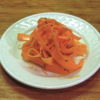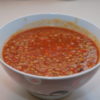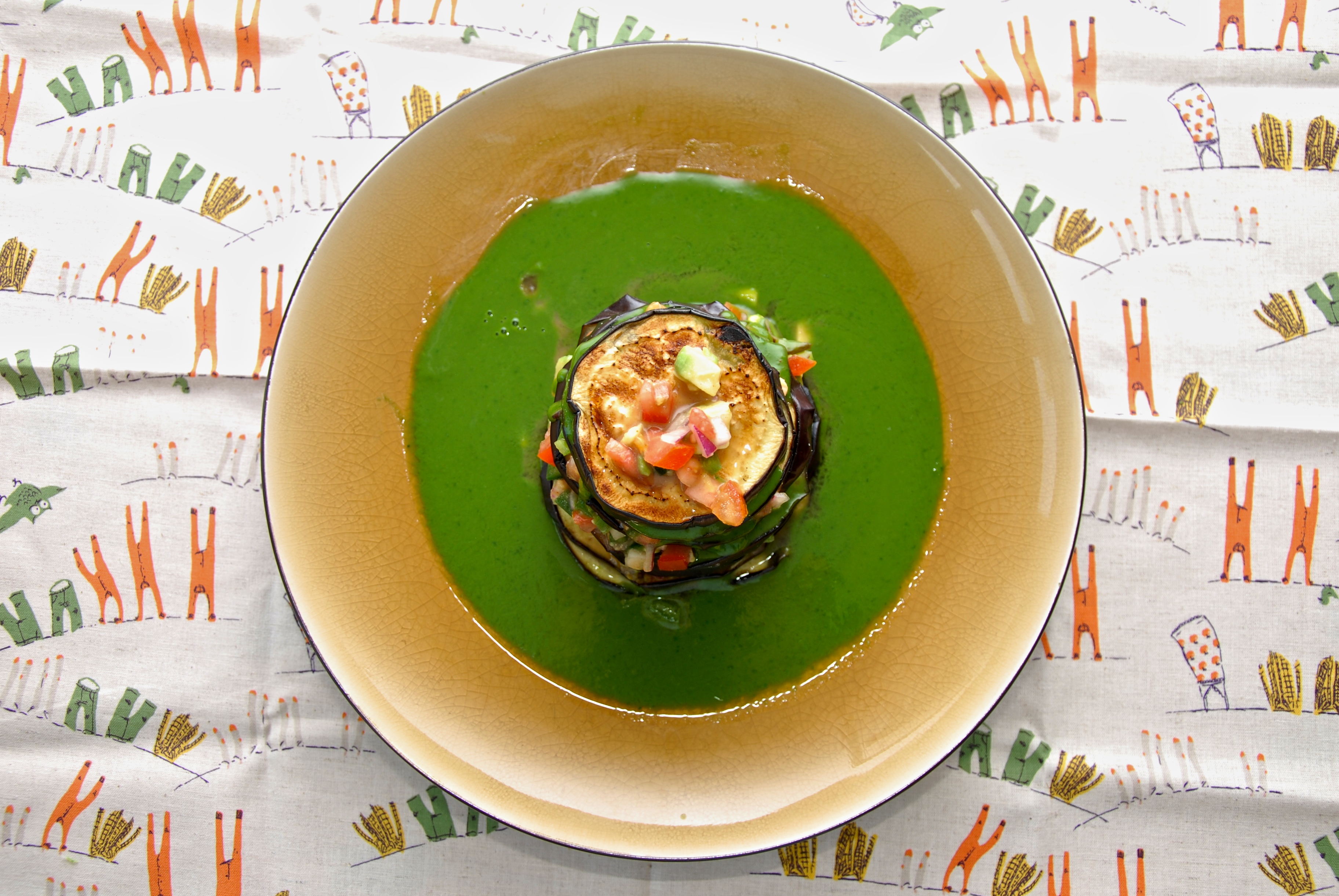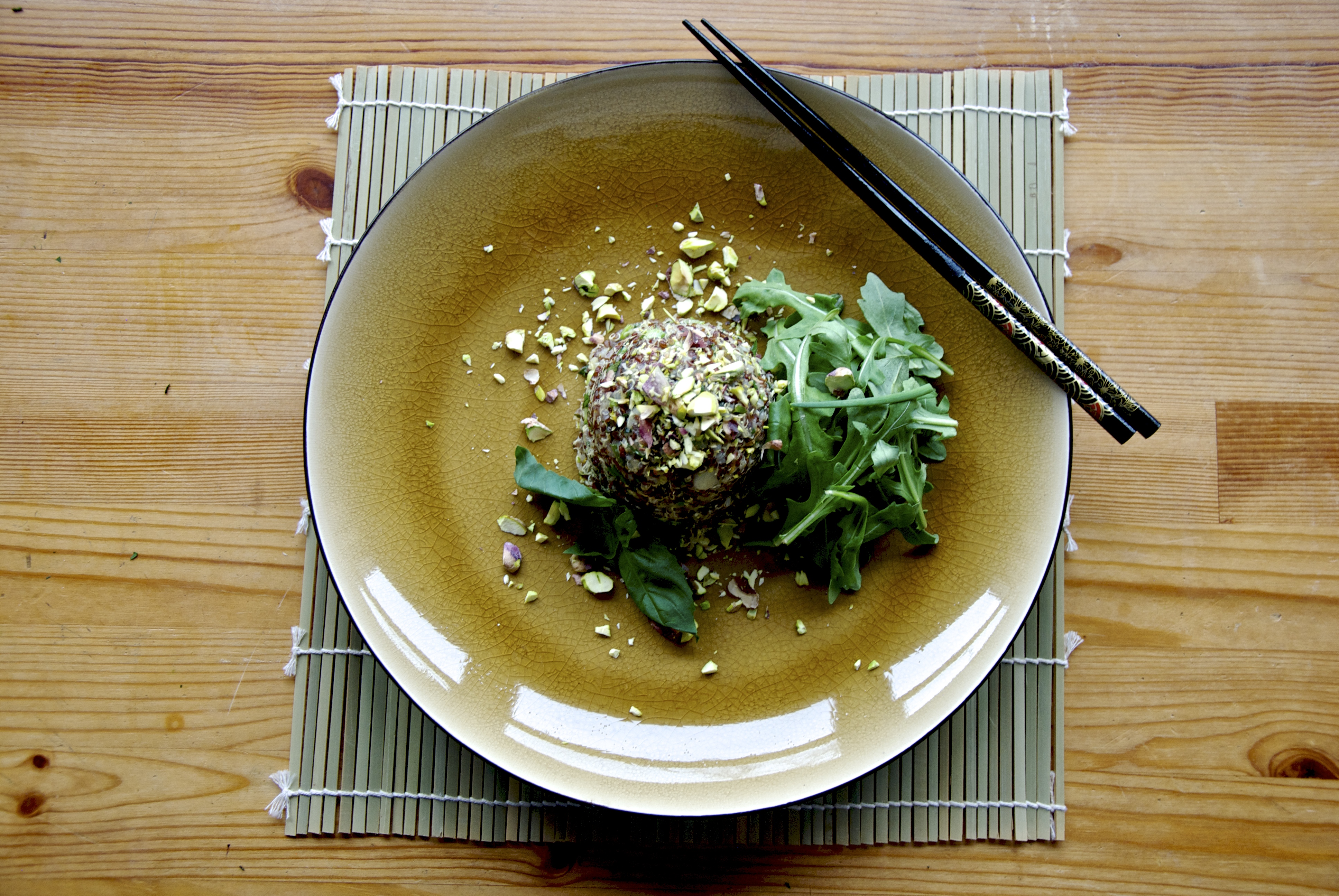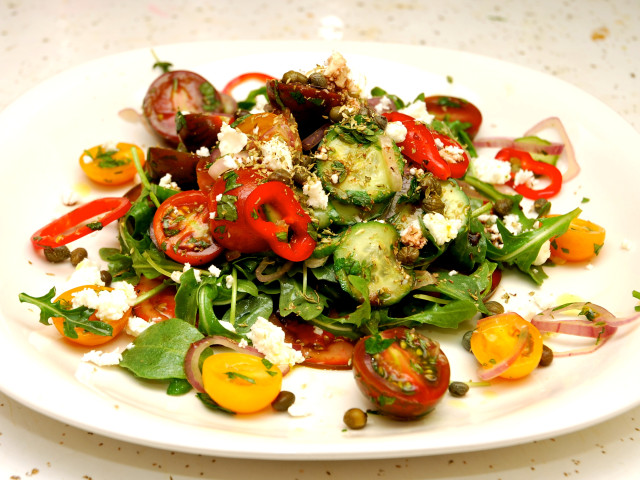
Greek salad is one the poster foods of greek cuisine. And for a good reason. It combines in a plate all the vegetables that mean summer in Greece; sweet juicy tomatoes, succulent snappy cucumbers, peppery sweet onions, crisp peppers and of course who can leave out the greek briny cheese, also known as feta. All of them held together with the power of olive oil, topped with oregano. A herb that is 100% greek. You find it in abundance in the hills and mountains of the greek country side. The greek salad is not only a delicious combination, but it is also visually appealing. As they say: you eat with your eyes first. And the crispness of the vegetables also engage your ears in the experience. It is therefore a full sense experience. The quintessential greek summer (and not only) dish.
Greek salad requires three people: a crazy one for stirring, a spender of the olive oil and a wise man for the salt.
It is also a classic dish. So why remake a classic dish? As my professor of thermodynamic said “If you are going to repeat something that has been done many times before, you either need to right a wrong, or offer something brand new“. In this post I am approaching both aspects. Greek salad in the US has involved to something strange. Started with tomatoes and cucumber and soon lettuce, peperoncini chilies, huge olives and mysterious dressings joined the party. The final salad is an abomination that the only common thing with greek salad is the feta cheese. And this is a complain of mine: slapping feta cheese on top of anything does not give you the right of calling it greek? WRONG!!! This is the first part I will try to address. Also I will show a slightly different recipe from what it is typical in Greece, which is the brand new aspect. So are you ready? Of course you are…

Here is the legendary list of ingredients:
- 1/2 lb tomatoes
- 1 cucumber
- 1 small onion
- 1 small sweet pepper
- 1tbsp pf capers – Not typical
- Herbs
- Salt
- Pepper
- Green stuff – Not typical
This is a pretty standard list of ingredients. But as you can tell from the picture it is not what we have. I switched around some ingredients. Instead of red tomatoes I use mini heirloom tomatoes and a kumato (mexican brown tomato), instead of cucumber I used small cucumbers, instead of the typical green pepper I used a small sweet bell pepper and instead of the onion I used a shallot. Also instead of the not so typical lettuce i used the arugula. Arugula is a peppery rockery (and so the name) green that also has a snap and holds well in salads. It is not typical to add lettuce in greek salad, so I am not including it. I do like however the arugula. It gives a different feel to the salad.

Just look at the amazing colors of these tomatoes. And it is not only the colors. The flavor is so much better. Sweeter and very unique. If you have not try them yet please do.
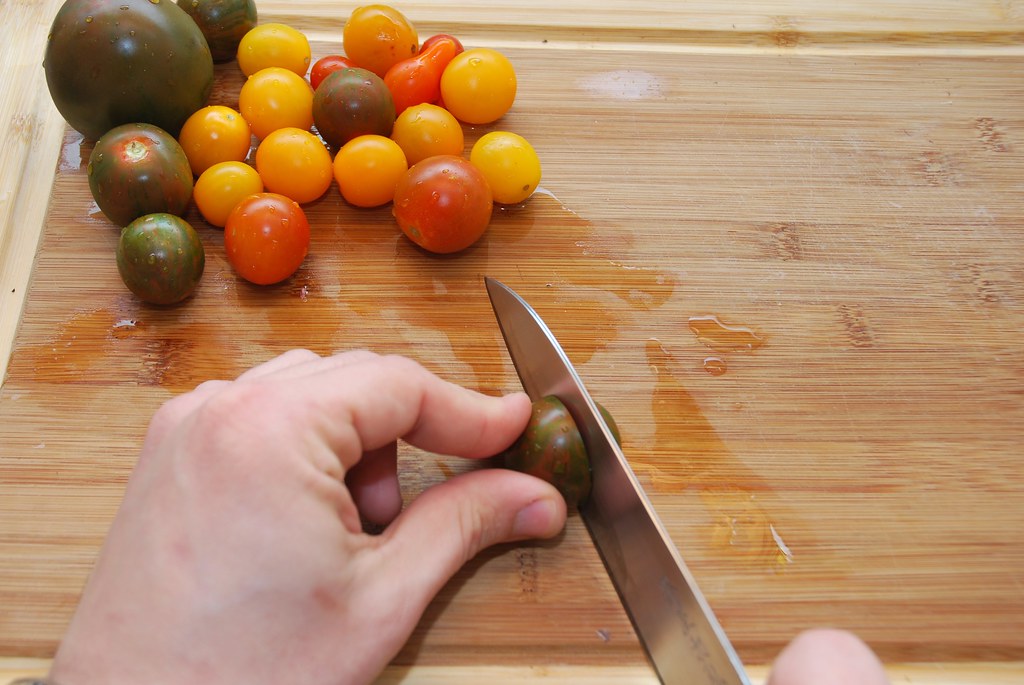
The are small, almost bite size. I still cut them in half to release some of the juice that will become the dressing. More on that later.
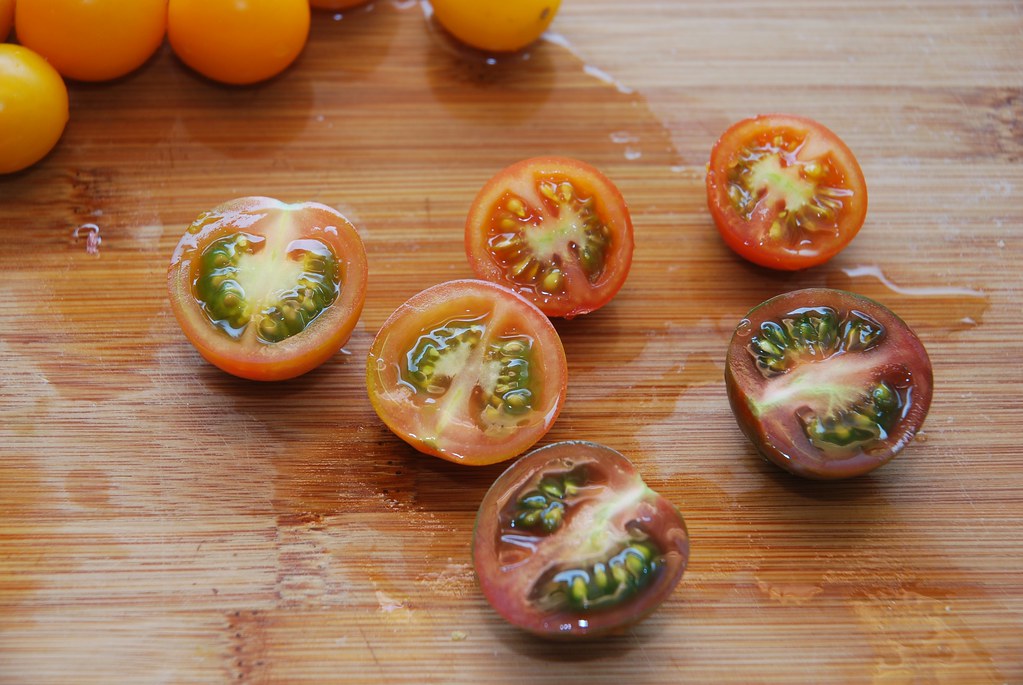
Just look at them. By the way, botanically speaking, tomatoes are fruits in the class of berries. You can see from tho picture why; the burry family includes or fruits that contain more than one seed arranged in grape like fusion, supported by a central stem. Also since we are in the subject, berries are also the peppers and the cucumbers.

And again, so pretty… Ok Enough now.

Scoop them in a bowl of your choice.
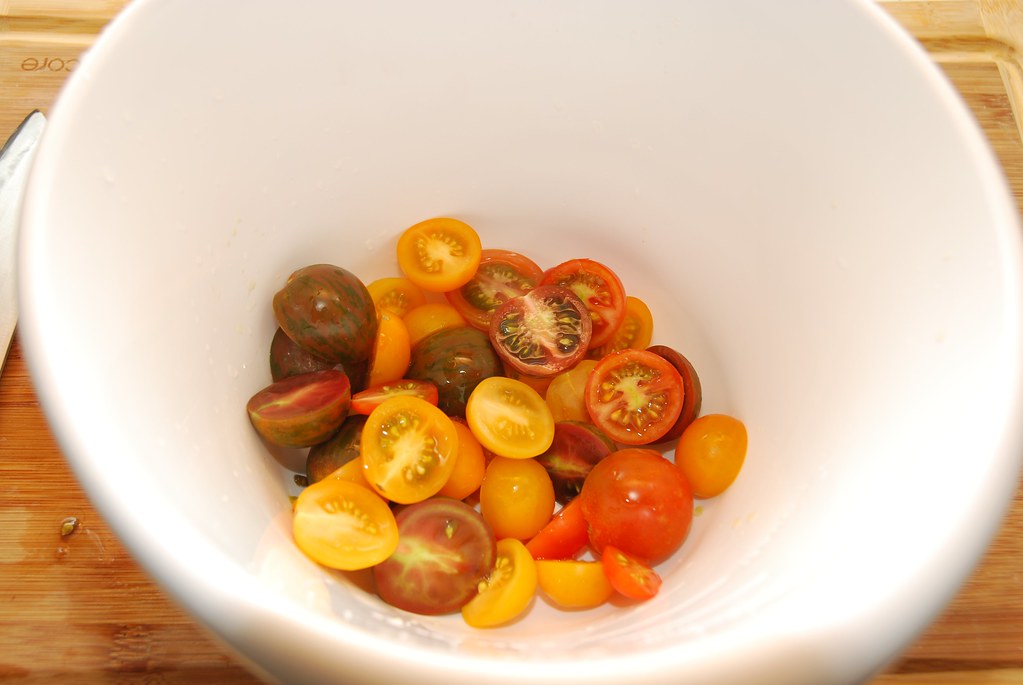
This is the bowl of my choice. Glass is better but plastic is fine too.
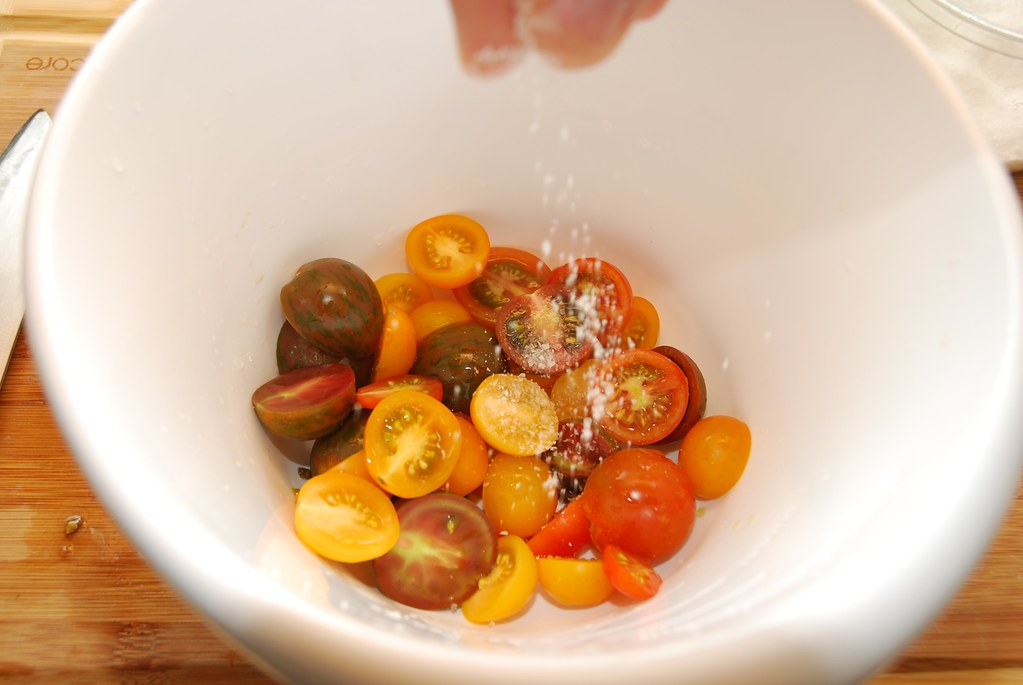
Salt them and let them for 5-10 mins to get some of their juice flowing.
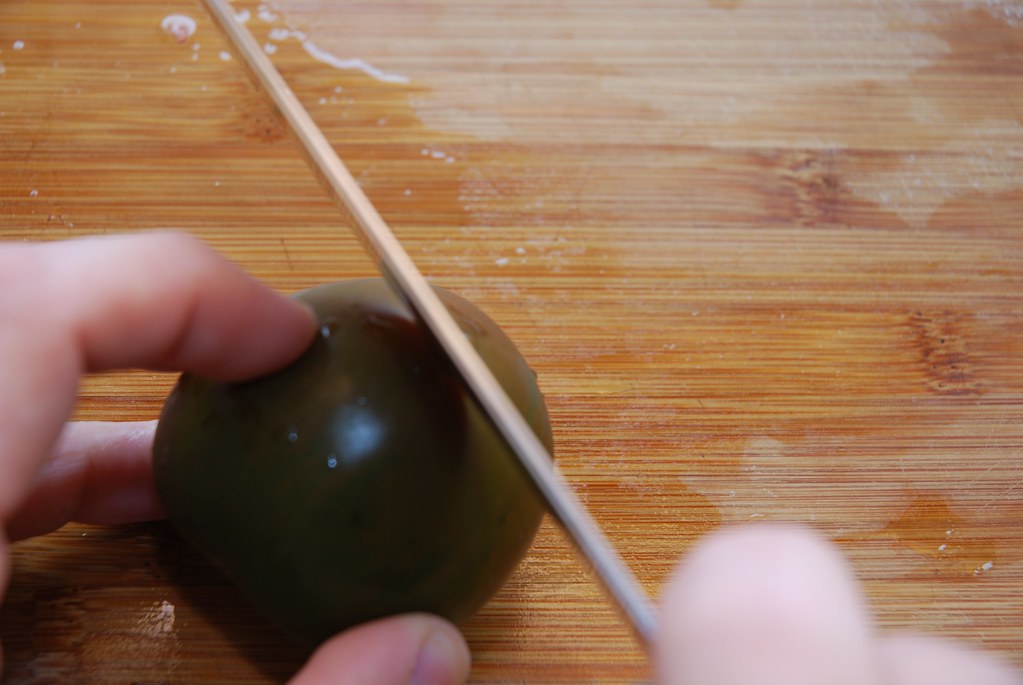
The kumato tomato we will be cut in thin slices.
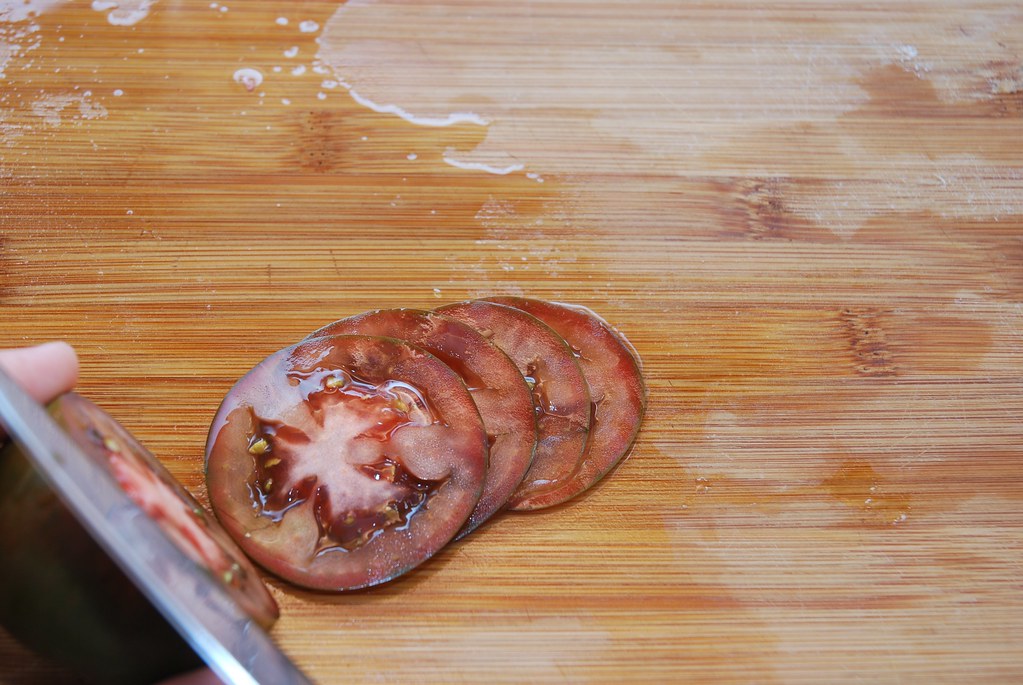
Like this. I just use this to create a variety of colors, textures and flavors. They will be the base of the salad.

Also cut the cucumber in thin slices.

We will treat the pretty pepper the same way.

Remove the top.
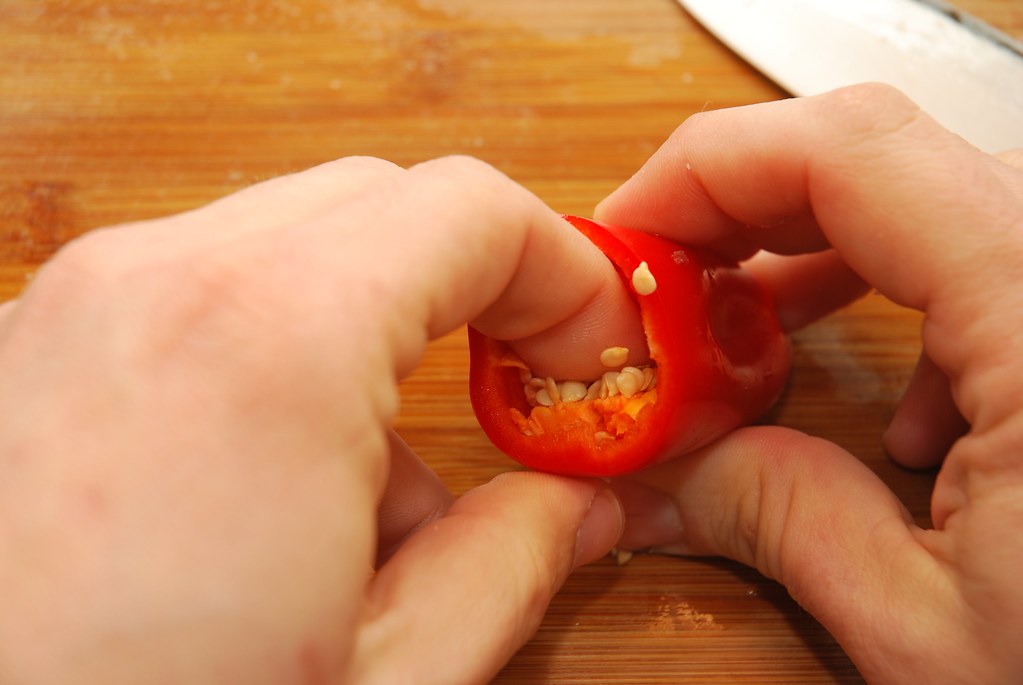
The seeds.

And slice it in thin slices.
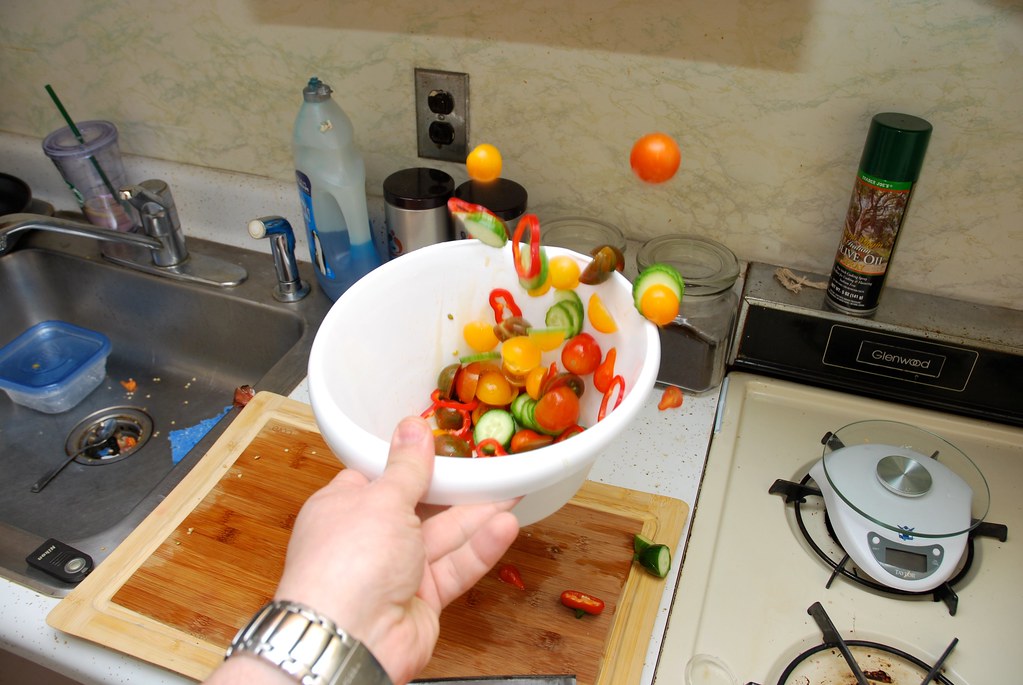
Add everything in the bowl and toss to mix.

Pretty… We have all the colors of the greek salad (green and red) plus a bunch more.
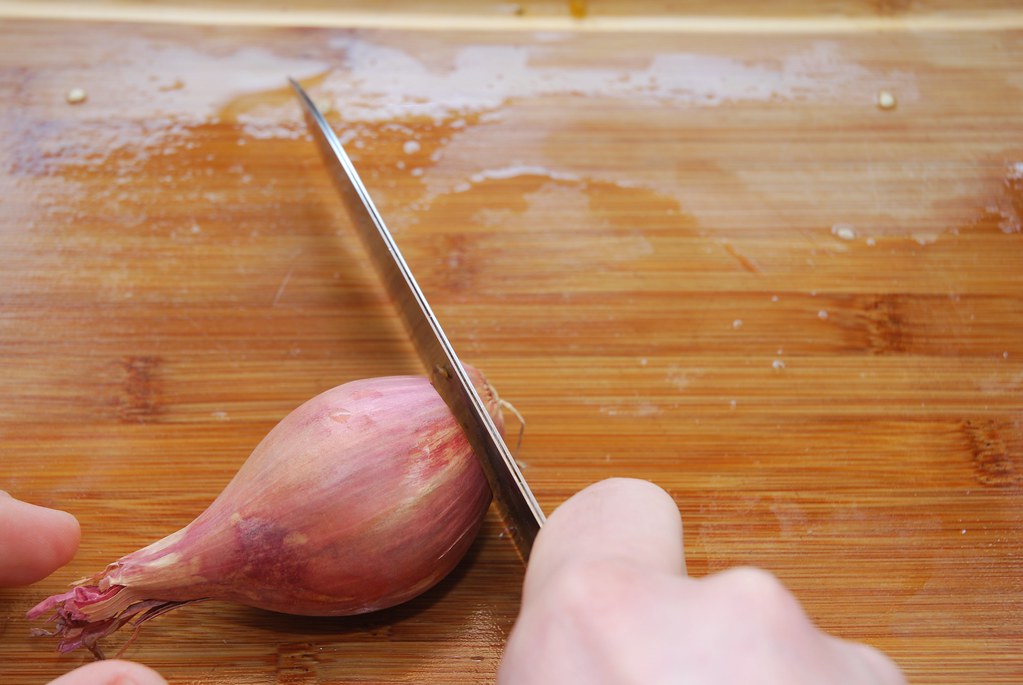
Trim the shallot root.

And the top part.
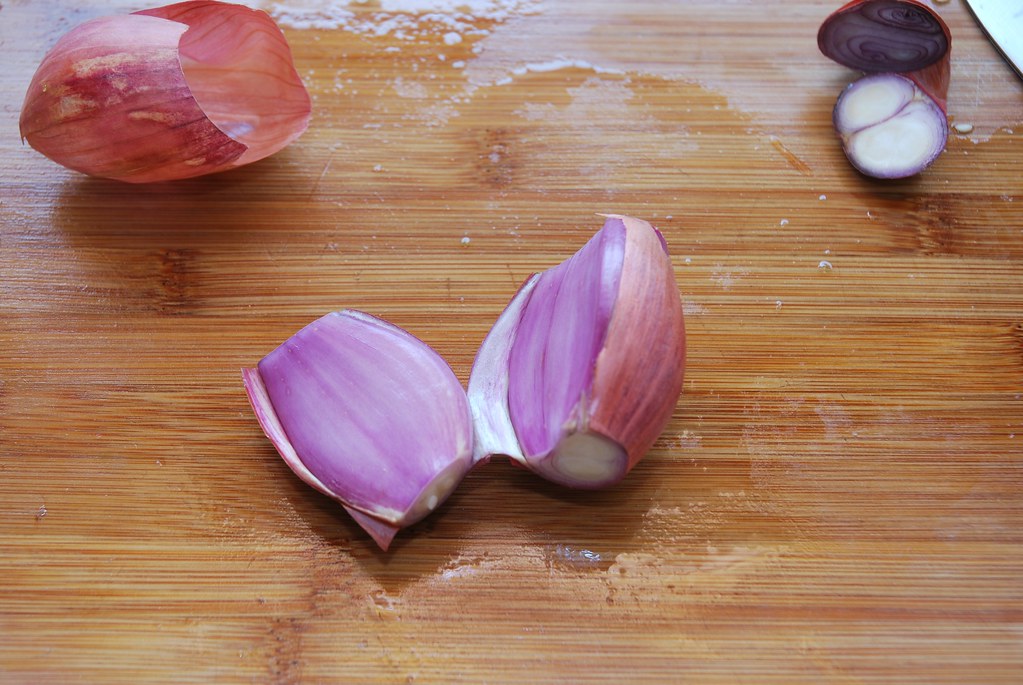
The shallot is a cross between the onion and a garlic. So it has cloves that are consisting of concentric layers like the onion. The flavor is sweeter but also stronger. It is great with butter. The butter & shallot combo is the base of everything french.
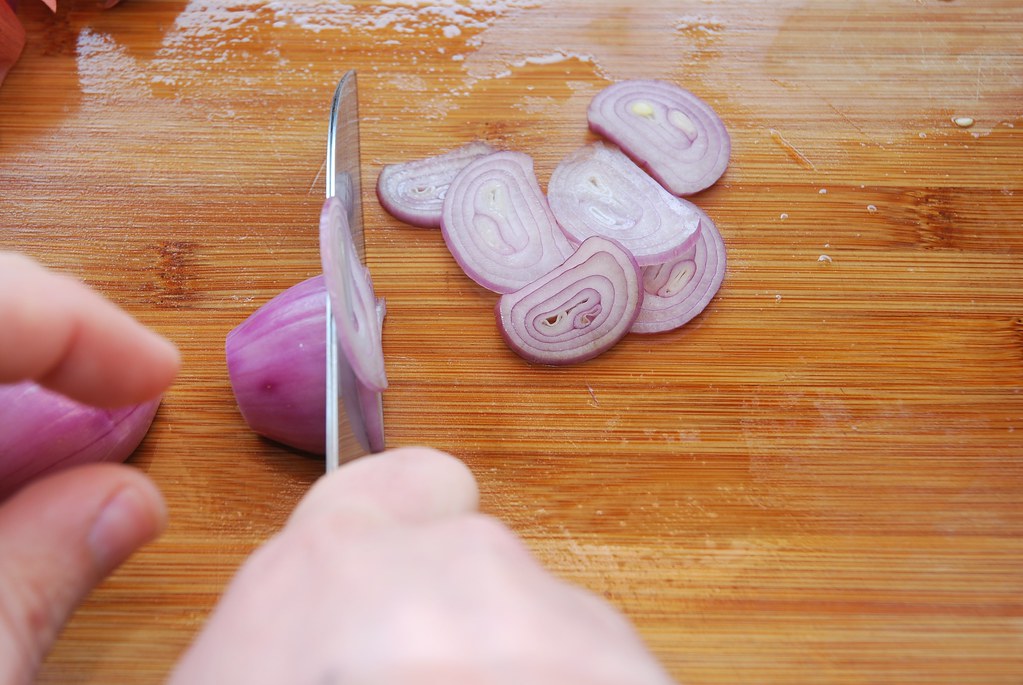
Slice it as well.
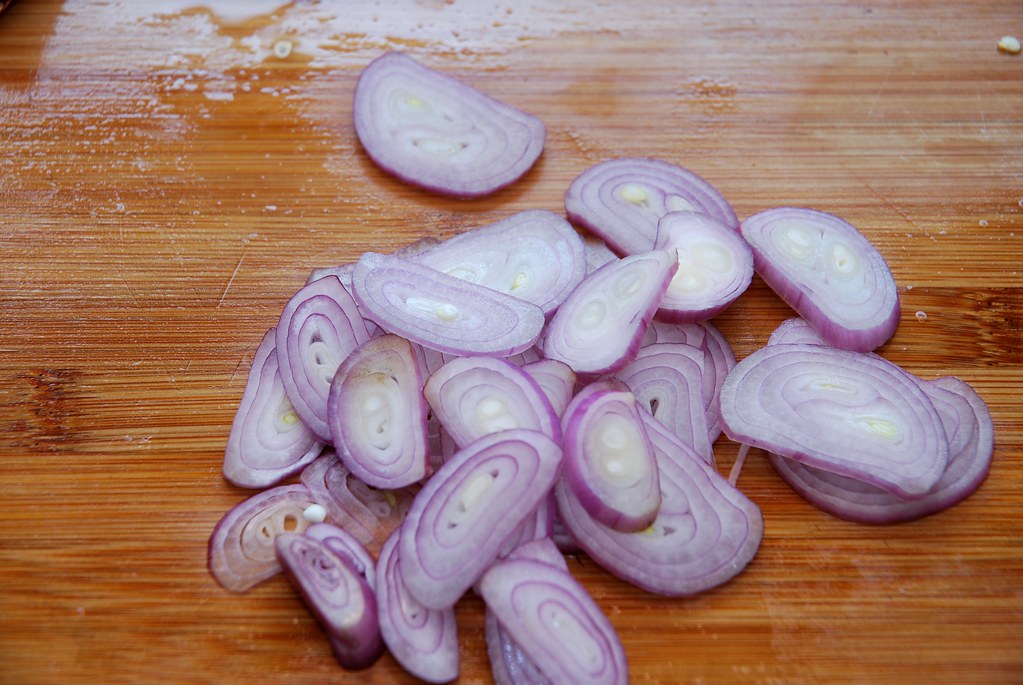
The shallot, although sweeter has a more pungent flavor and it can be an issue. So we will de-pungify it.
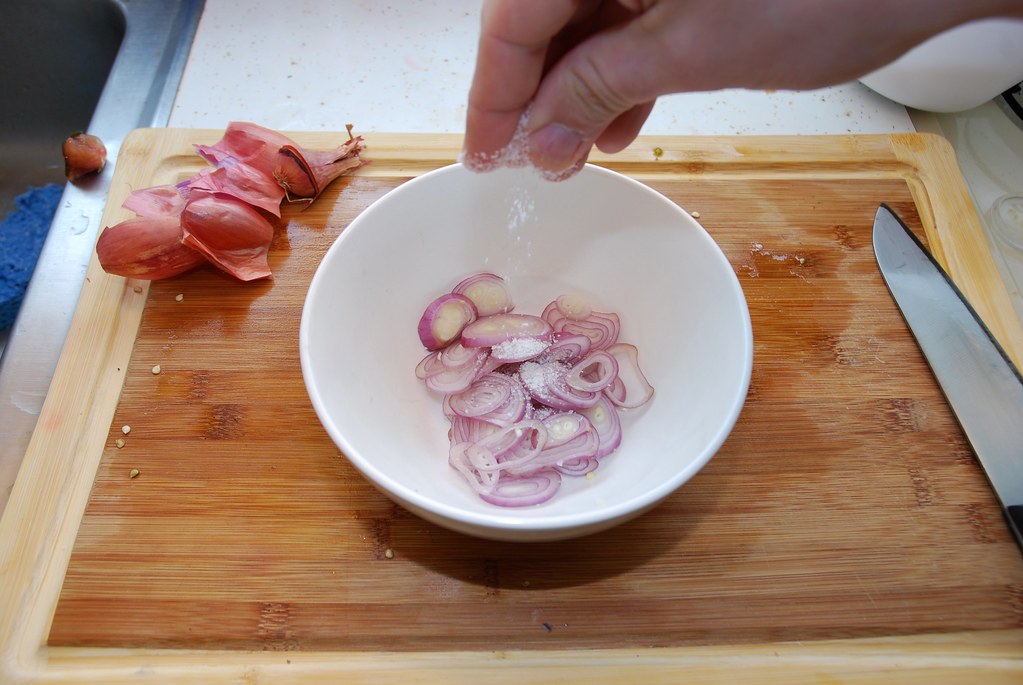
Put in a bowl and add plenty of kosher (or sea) salt.
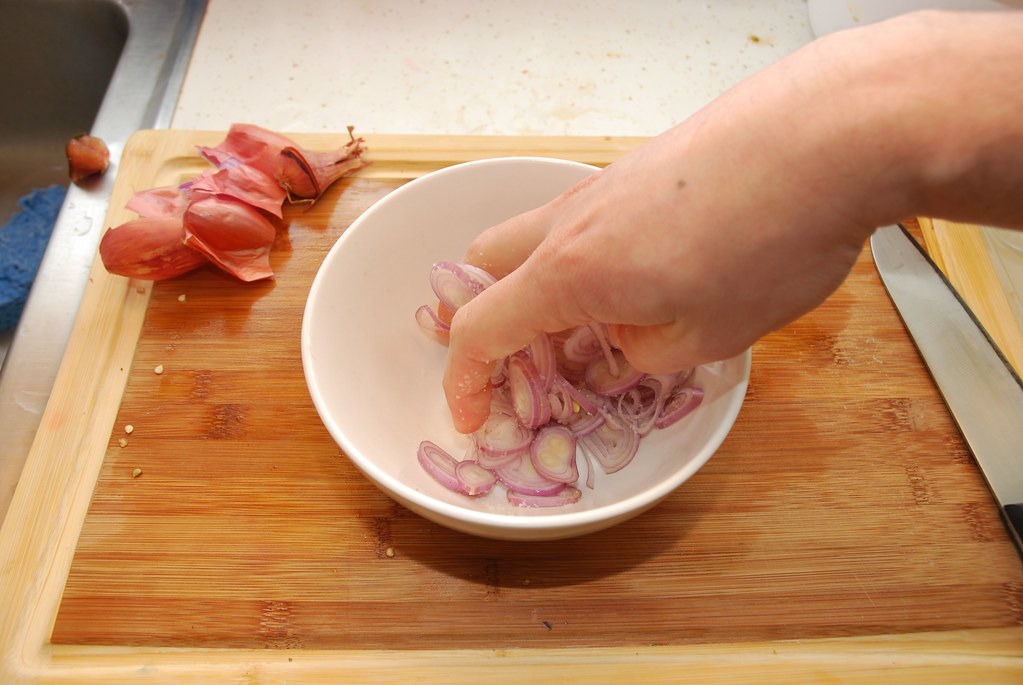
Rub the salt with your finger. This action will act as an abrasive to break down the cell structure to release much of the pungent flavor. The flavor and pangency comes for the enzymes in the onions that react with the sulfuric acid also in the onion. In the cell structure of the onion these two are kept in separate vessels. Once you break the cells, either with a knife or with your teeth, these vessels also break releasing their content. The results of this is the propanethiol S-oxide, a volatile sulfur compound that wafts upward toward your eyes and make you cry or makes your throat burn. Sometimes they even mix in your gut, giving you a nasty breath. By breaking the cell walls with the abrasive nature of the salt, we react these two compounds before we use it in the food.
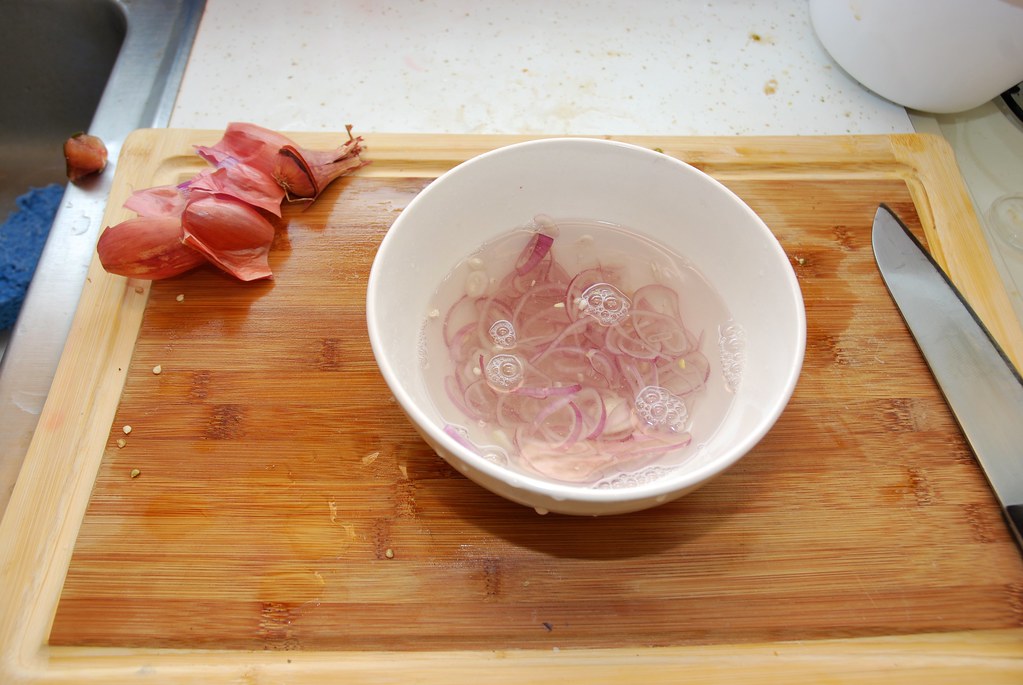
Wash the shallot with cold water. This will remove all the propanethiol S-oxide and the cold will rerun some of the snap back to the onion.
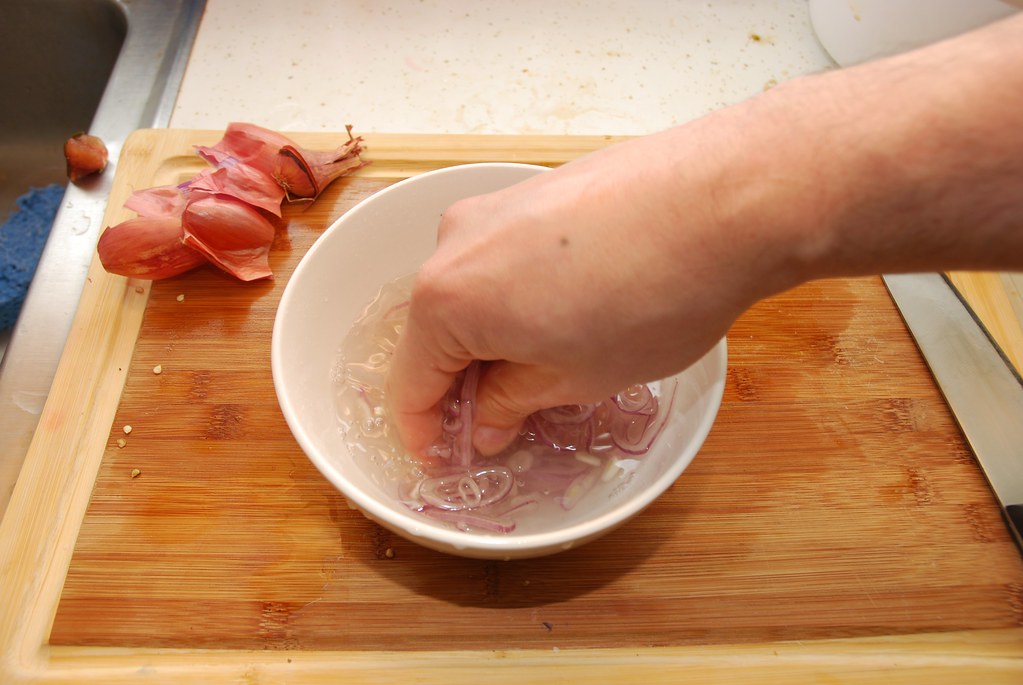
Rub the shallot well.
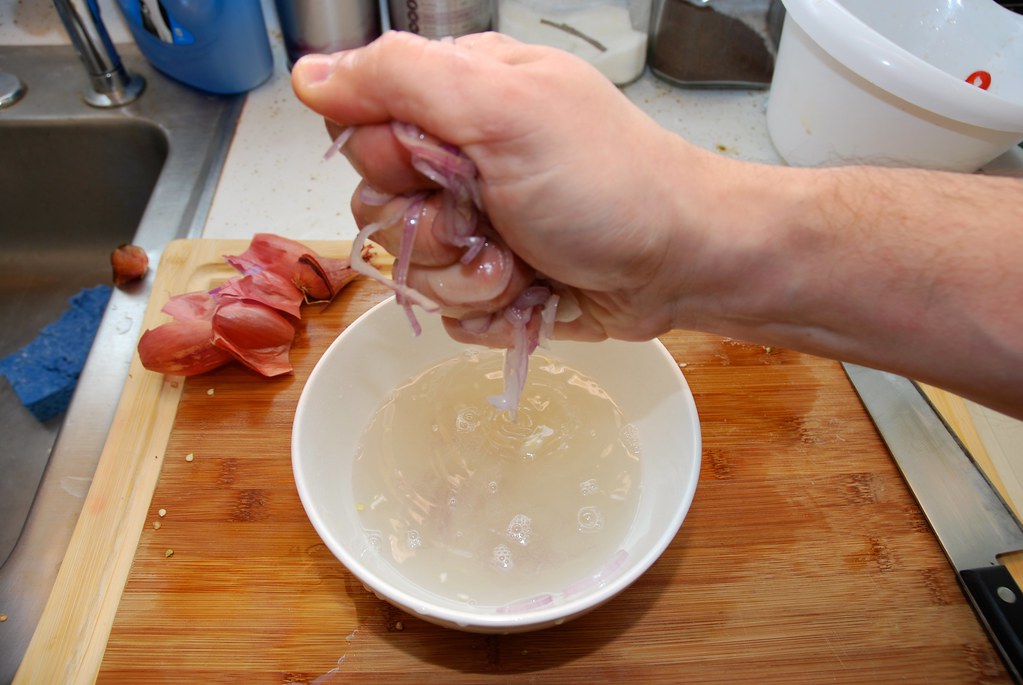
Squeeze it in your hands to drain it. This trick by the way works with all onions.

And add it in the bowl. Use your fingers to separate the onion rings.

Chop the herbs, namely parsley.
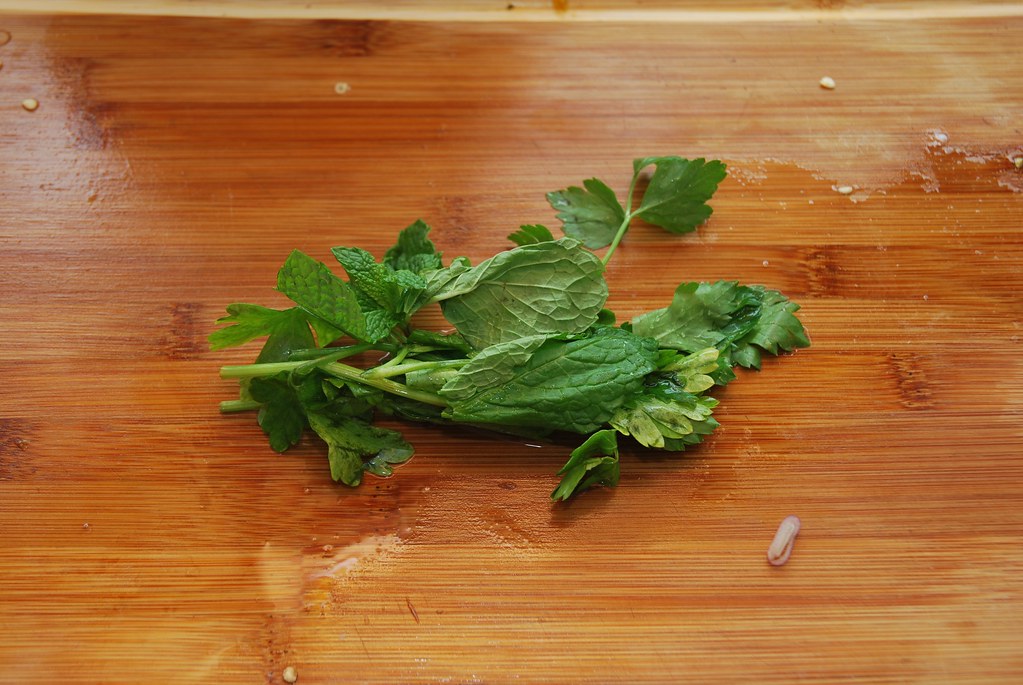
and some mint. Yes… mint is not typical in geek salad, but does this look to you as typical greek salad? Besides it is nice. I like mint.
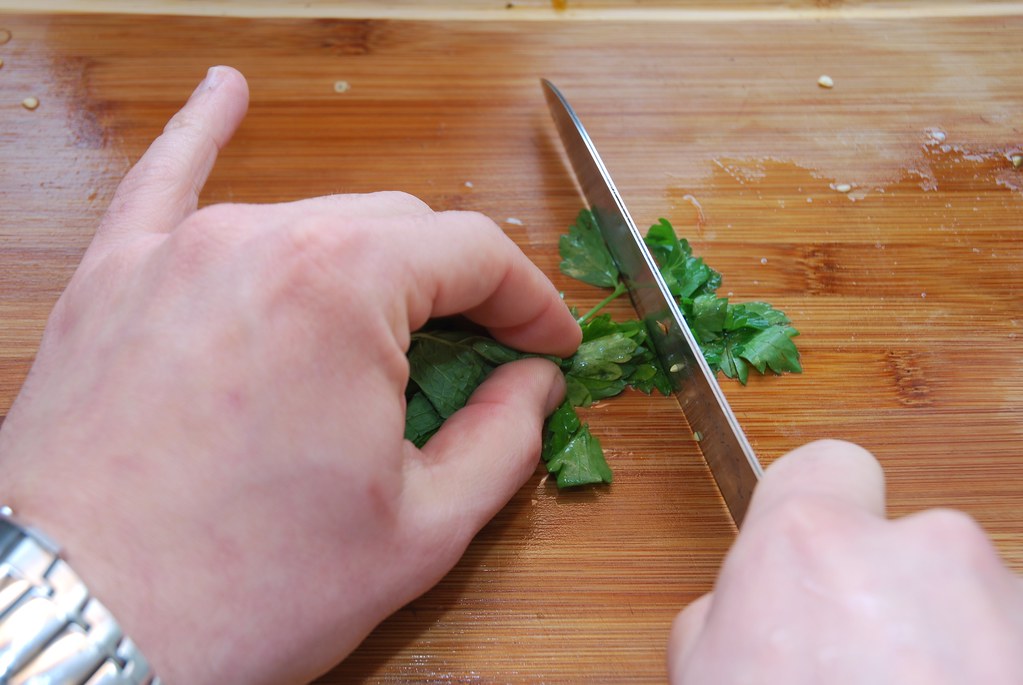
Chop with your knife. Yes flying pinky. I know.

Finely chop by rocking your knife back and forth.
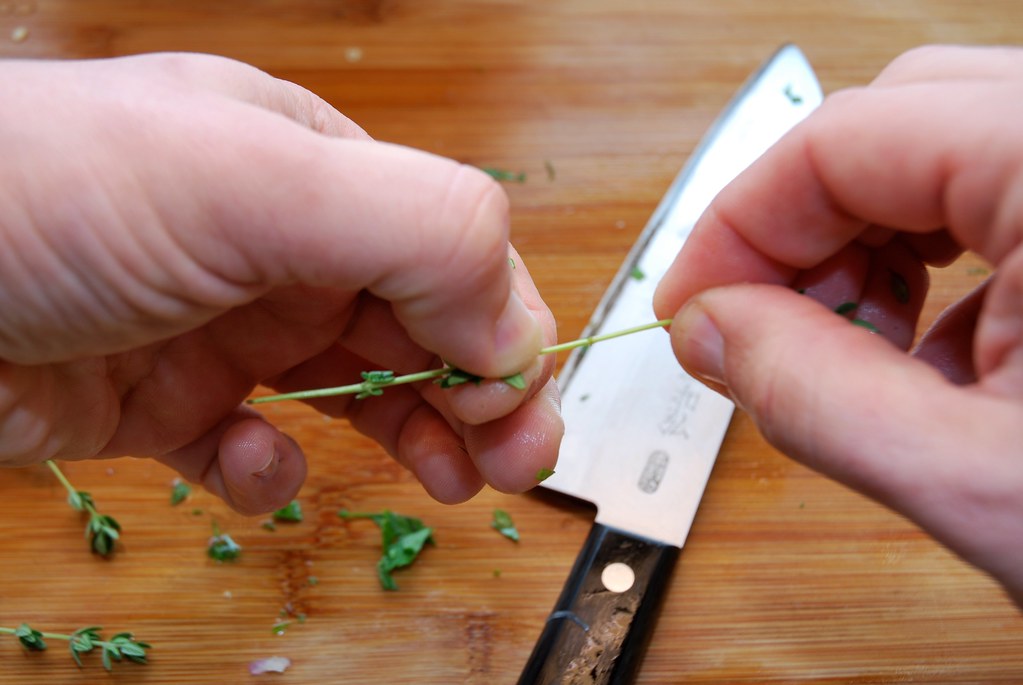
The thyme is easy. Take the spring and pull with your fingers to remove the leaves and left with the stems. Add all the herbs in the bowl and mix.

By this time enough liquid from the cucumber, onion, and tomatoes has be extracted. This will be the acid of the dressing. If you are watching food network you probably heard various chefs referring to the extraction of liquid with salt as osmosis. Yes it is osmosis, but it is a chemistry term very important in chemical reactions and essential for life to exist.

Add equal amount of oil. Squeeze bottles for that are are so awesome! I love them!

Mix with a spoon. Yeah you can use a whisk too, but… It has no emulsifiers (mustard, eggs etc) so it will never come together so no need to mix with a whisk.
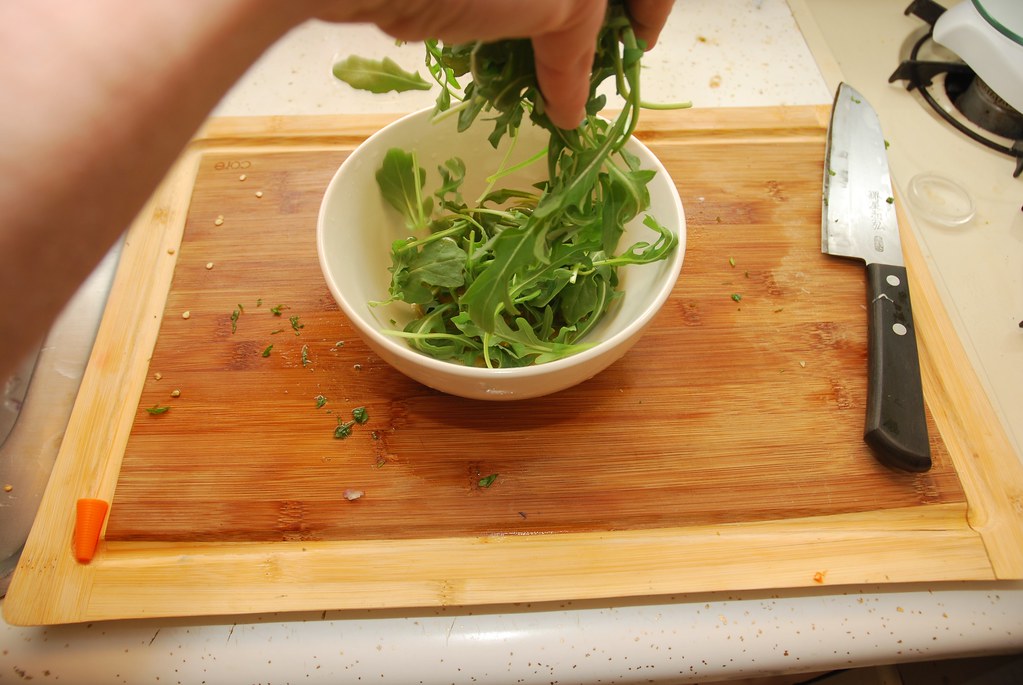
Add the arugula in the dressing and toss well to coat.

Right before you serve add oil to dress the tomato salad. Adding it before will wilt it.

Plating: Start with a plate… (empty and clean).
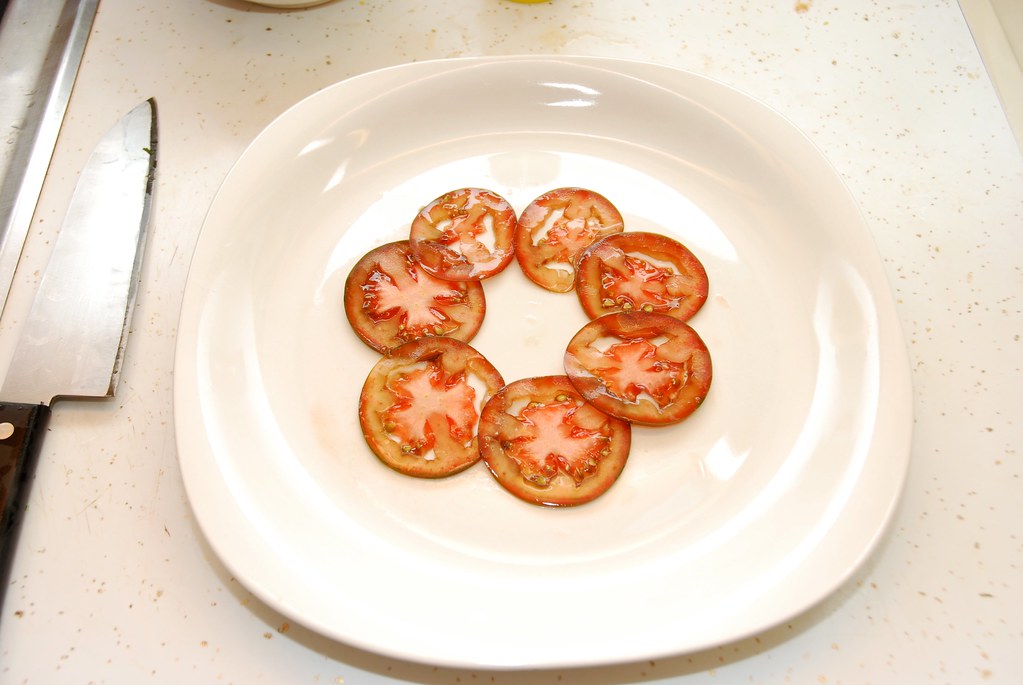
Build a foundation with the kumato tomato.
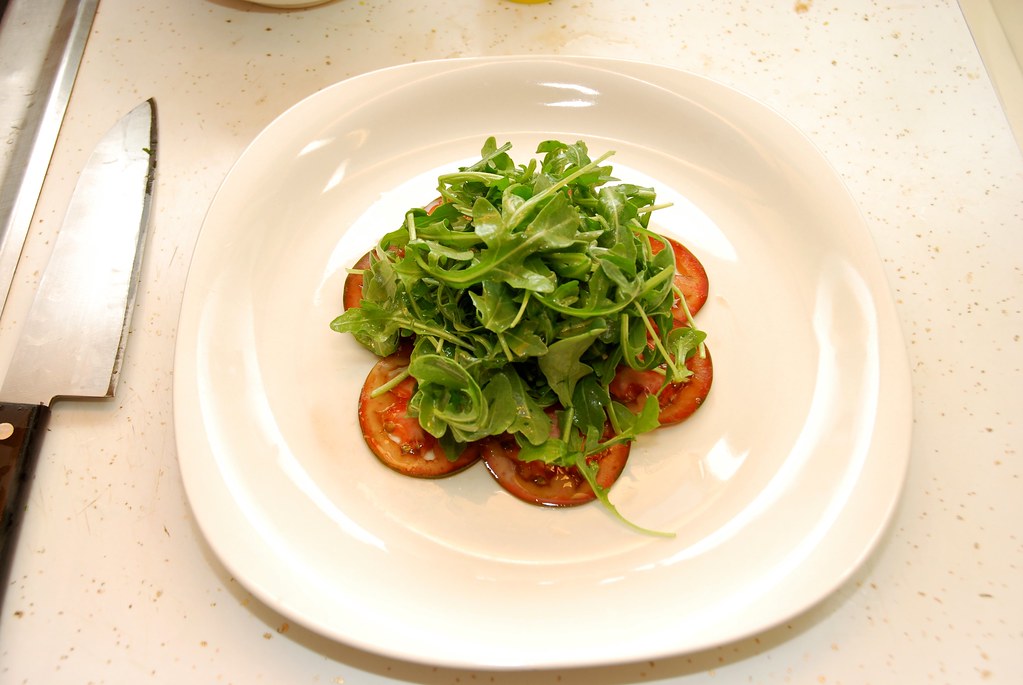
Top it with the dressed arugula.
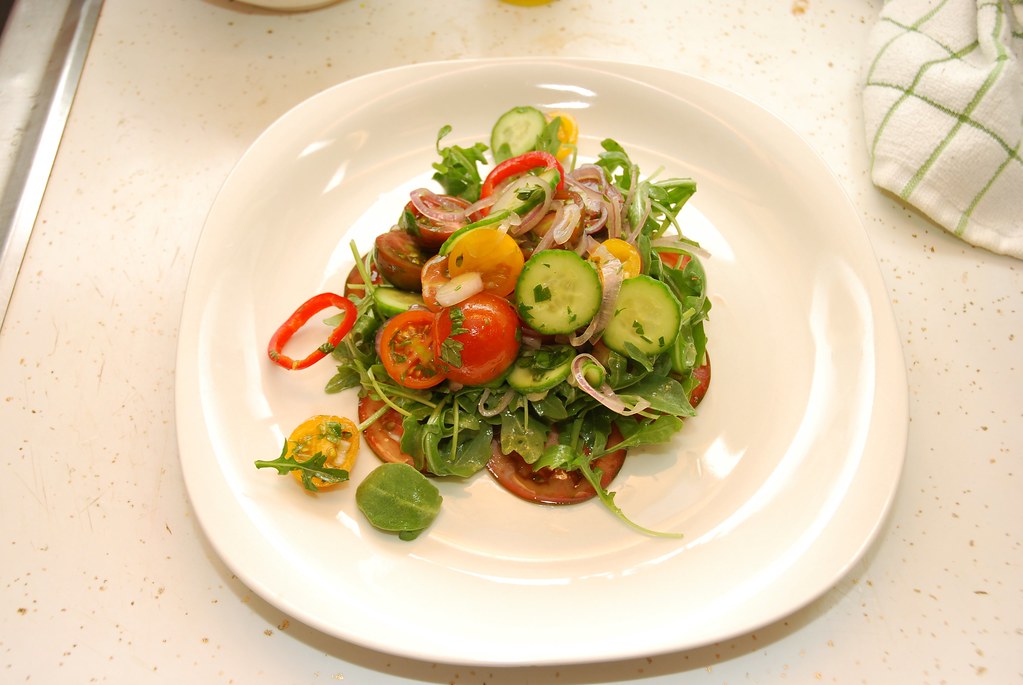
Folow that with the tomato and cucumber mixture.

Follow that with the feta crumbled it with your fingers.
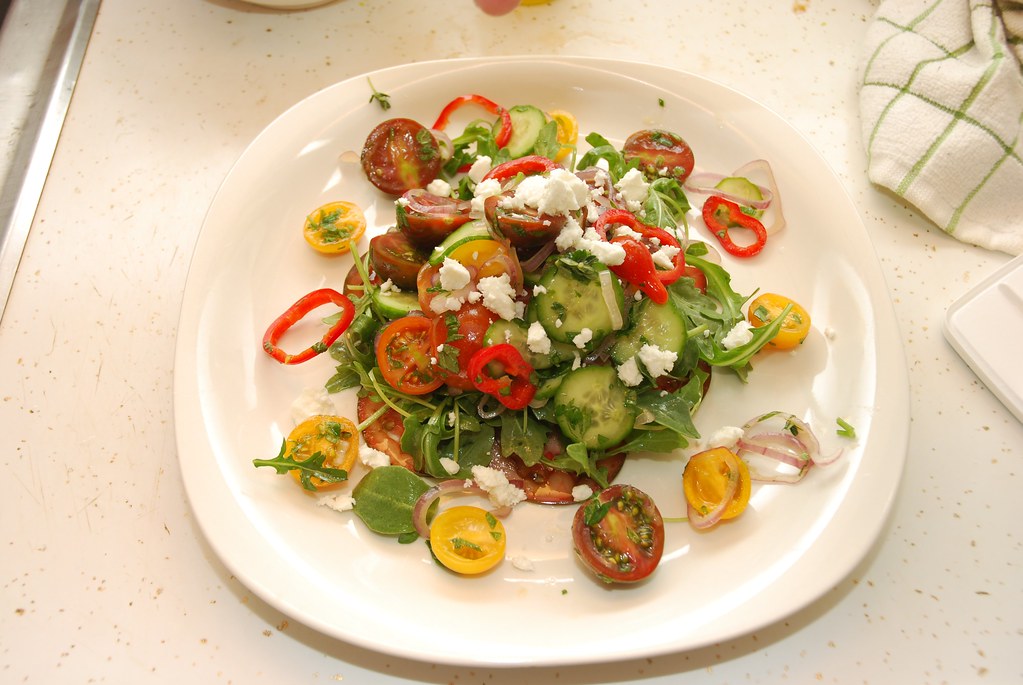
Top it off with oregano.

Add some capers. The tradition dictates for olives. I like capers. No pits to spit out.
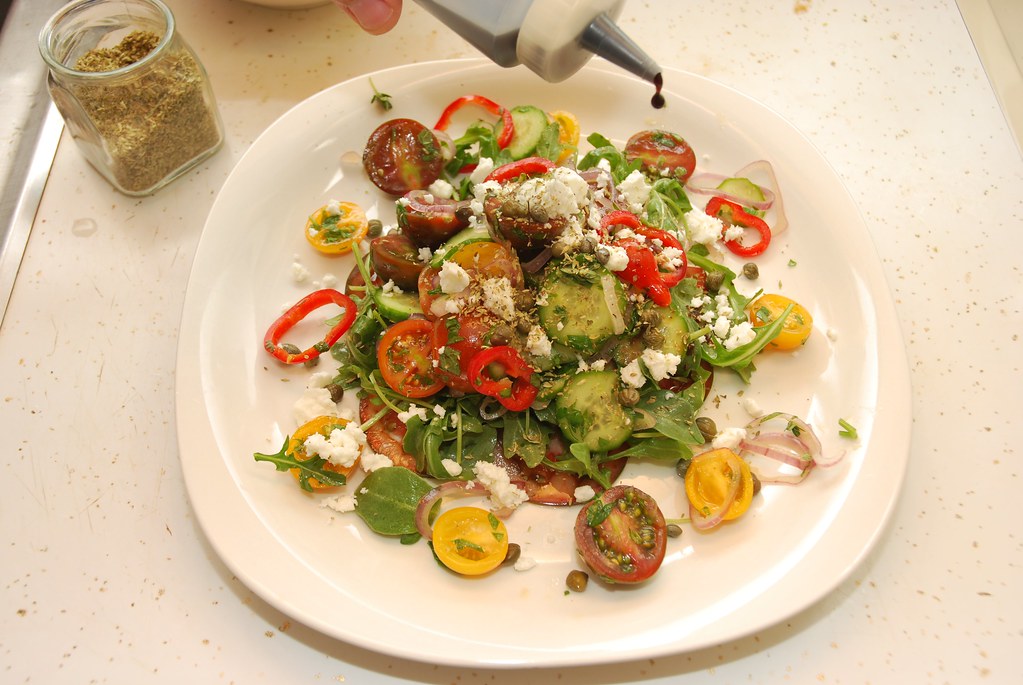
A final dressing with balsamic vinegar.
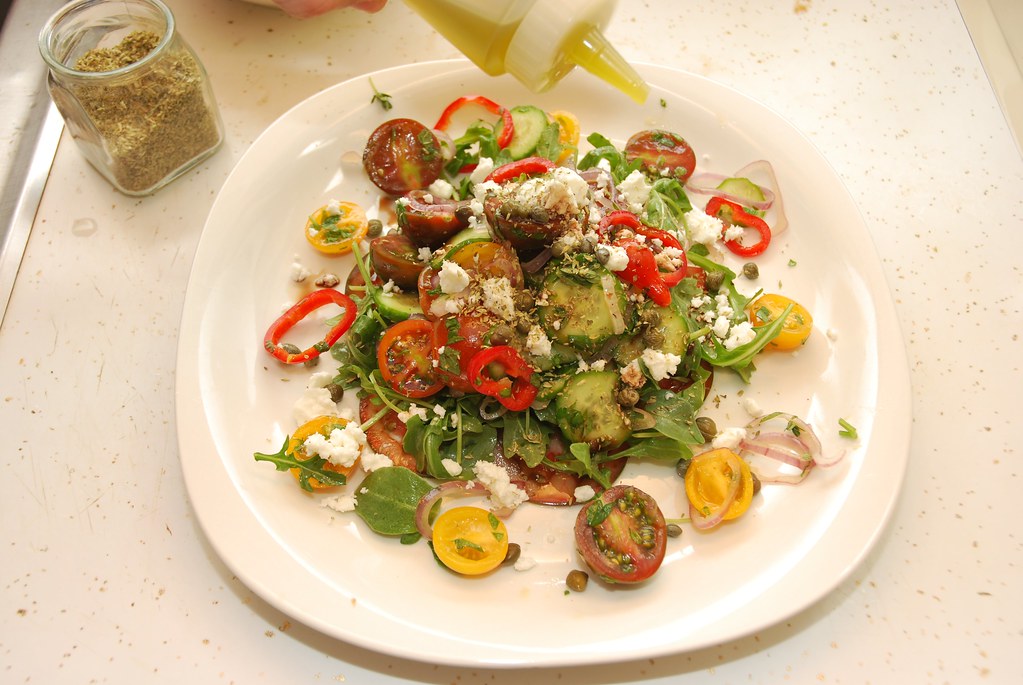
Follow it with some more oil.

And there you have it.

Greek? Most definitely. Traditional? Maybe. Tasty? I will leave this to you…
We should note here that this salad is made with the restaurant salads in mind, which is the usage of enough dressing to coat the vegetables used here and add an extra layer of flavor. Typical greek salad requires lot’s of oil and bread to dip it in the reach liquid produced by the mixing of the oil and the tomato. It is divine. Simple but divine.
Printable Recipe Card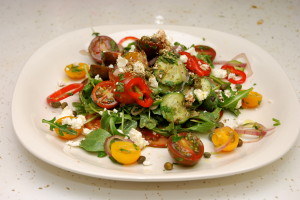
Greek Salad is one of the few dishes that make greek food a staple. Here I present a play on a classic by substituting the ingredients with more modern versions.
Ingredients
-
1/2 lb tomatoes
-
1/4 lb cucumber
-
1/4 lb feta cheese
-
1 small onion
-
1 small green pepper
-
1tbsp of capers
-
Salt
-
Pepper
-
Baby arugula
Directions
- Cut the tomatoes in bite size pieces.
- Separate the juice of the tomatoes.
- Slice the cucumber in 1/4 inches pieces.
- Cut the onion in thin slices.
- To make the taste of the onion less sharp rub it with kosher salt.
- Wash the salt off and soak the onion in a cold water.
- Mix the vegetables together.
- Add the feta cheese in crumbs.
- In a ball mix the reserved tomato juice with the olive oil to make the dressing.
- Plate the arugula.
- Add on top the vegetables.
- Add the dressing.
- Sprinkle the oregano.
Tips
- Feel free to mix and match other tomatoes that are colorful and playful.




